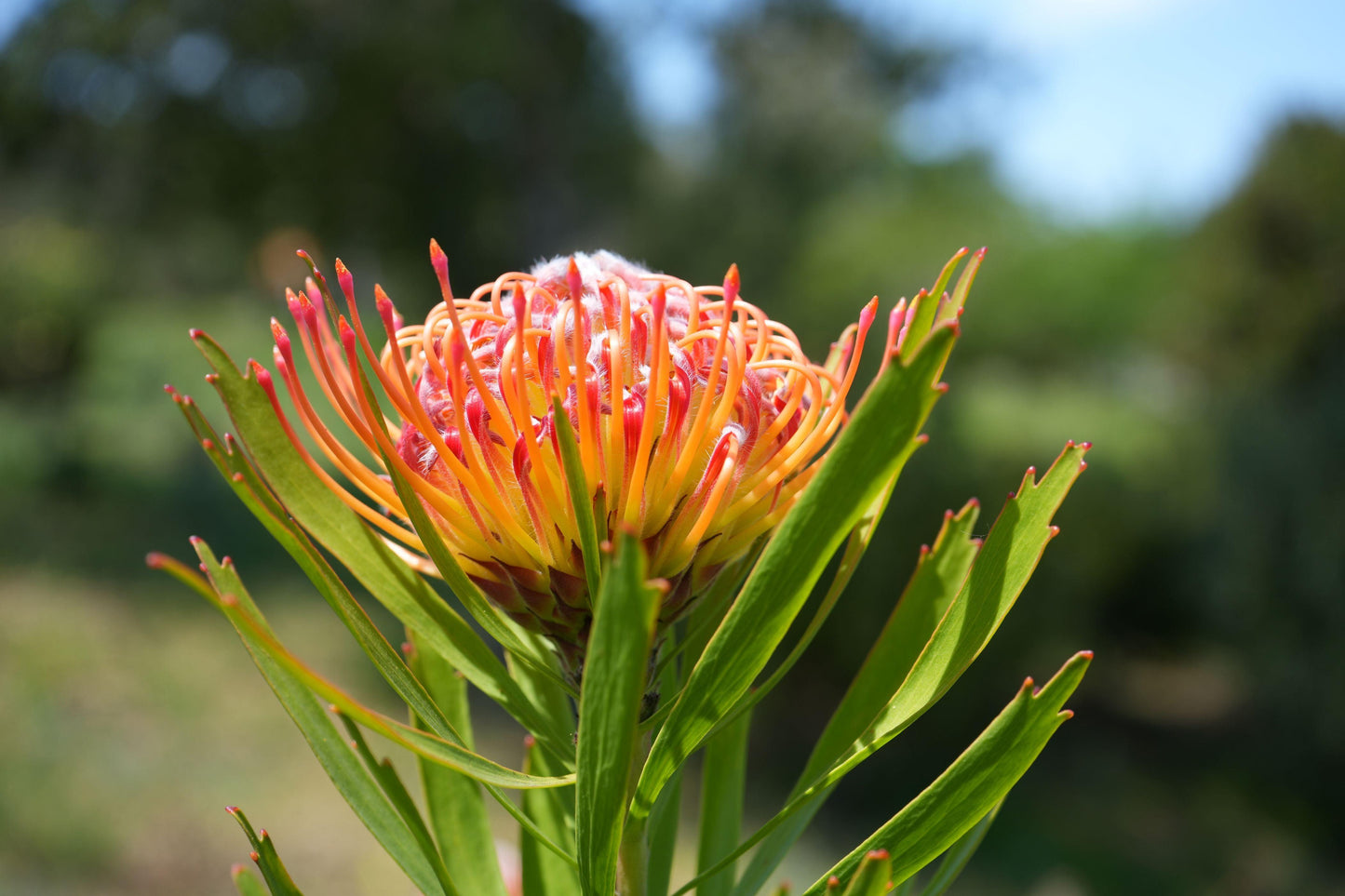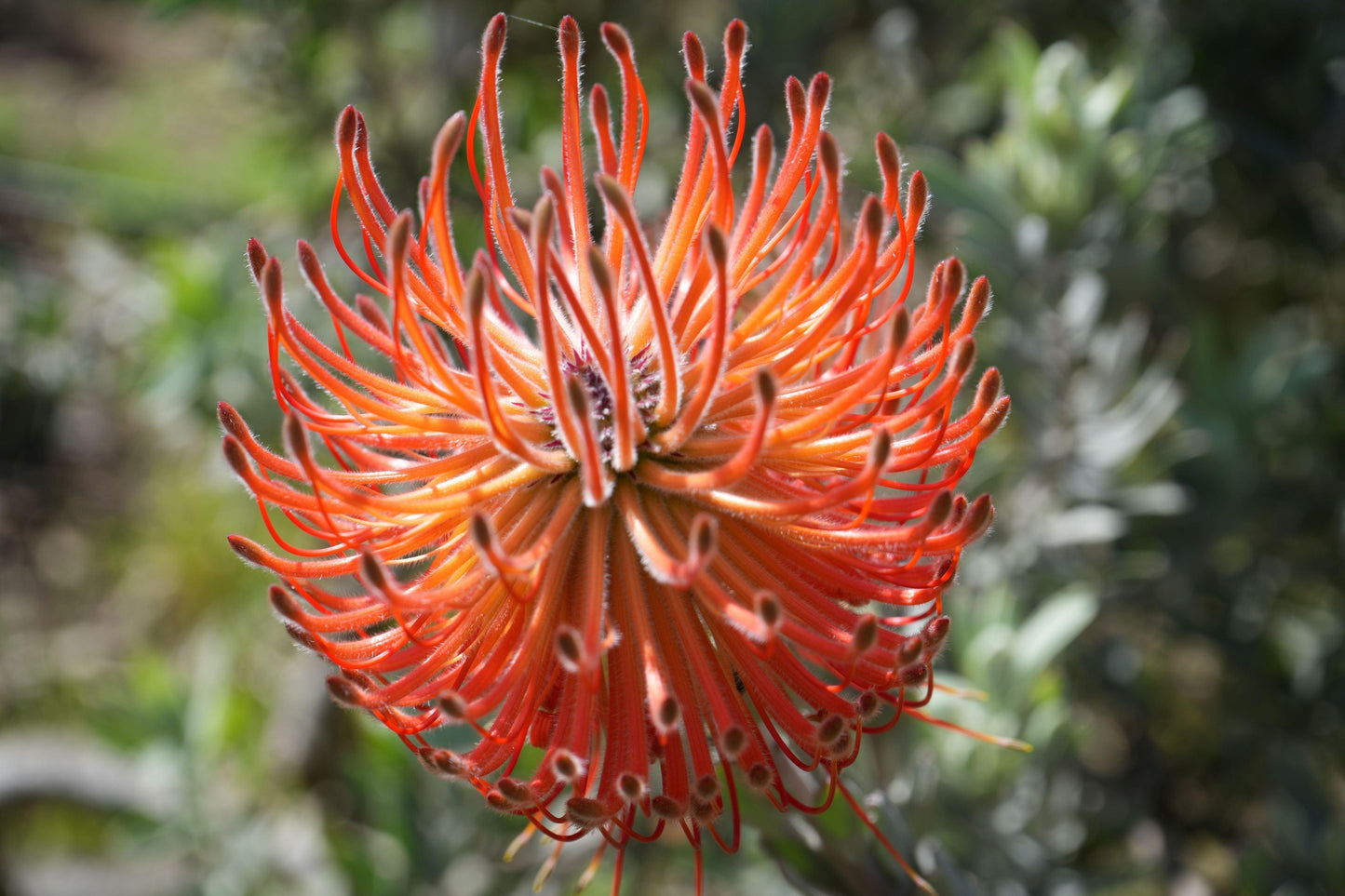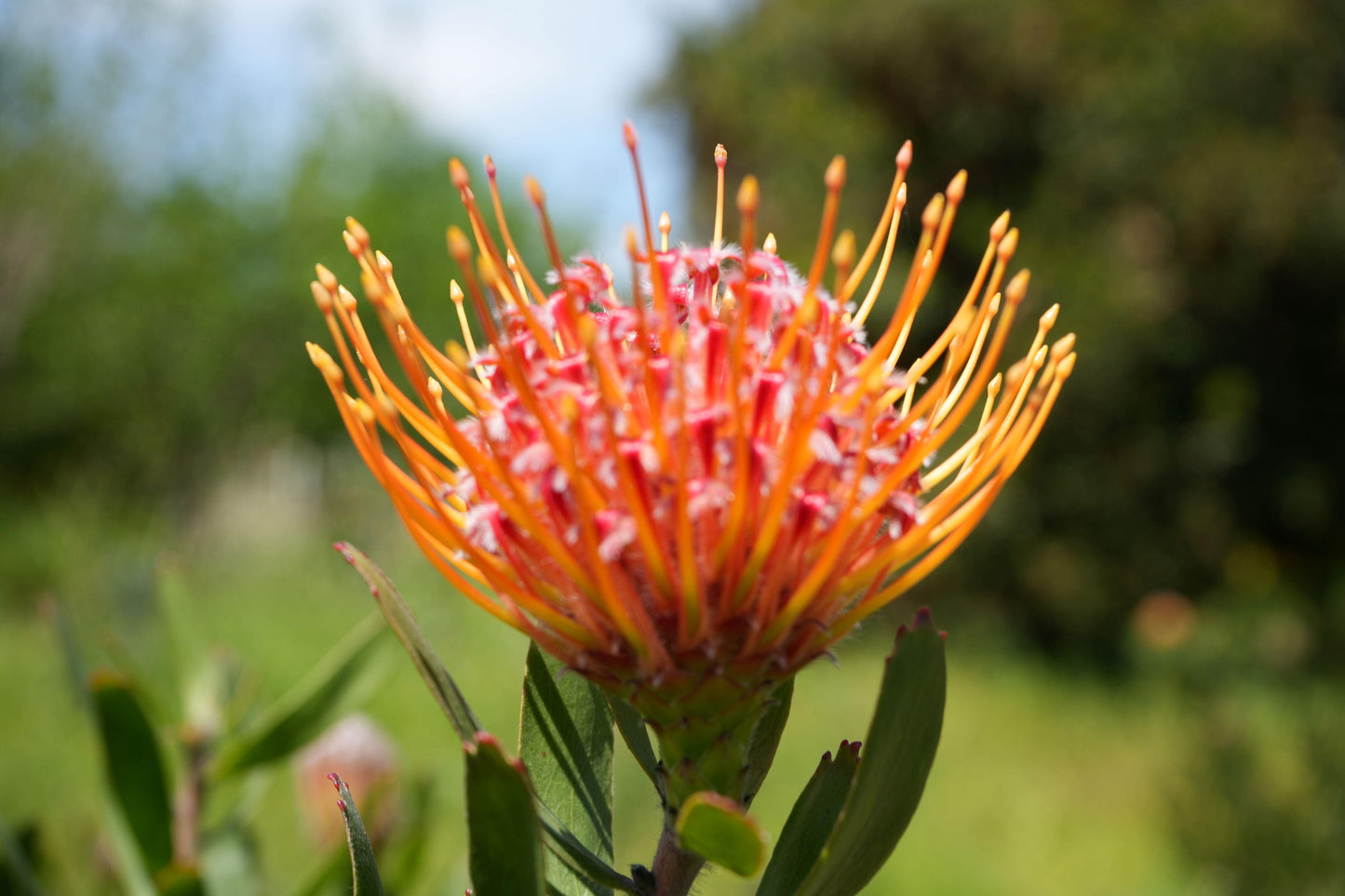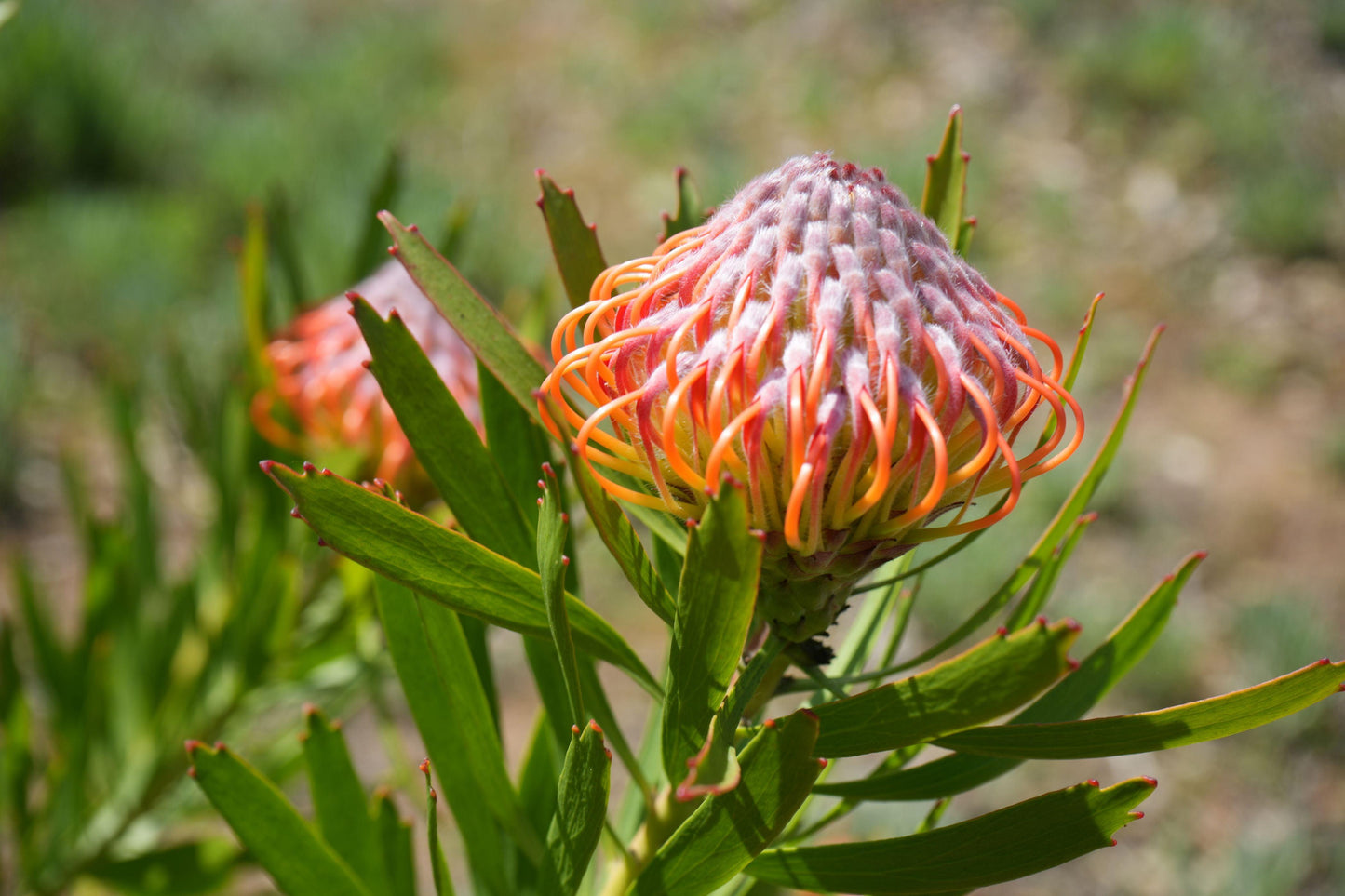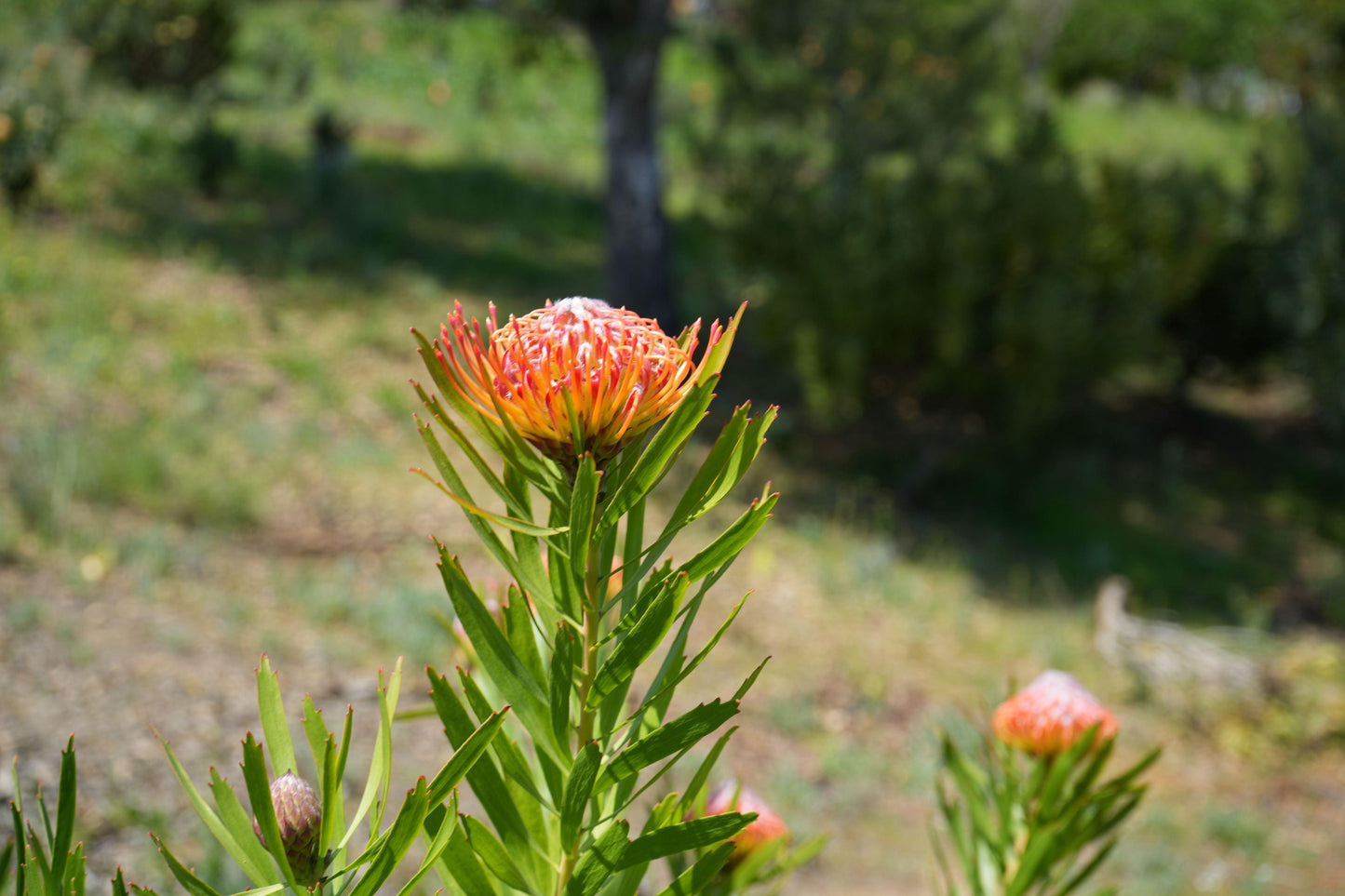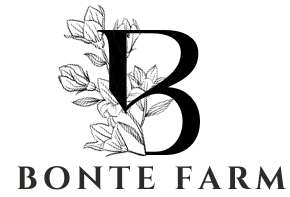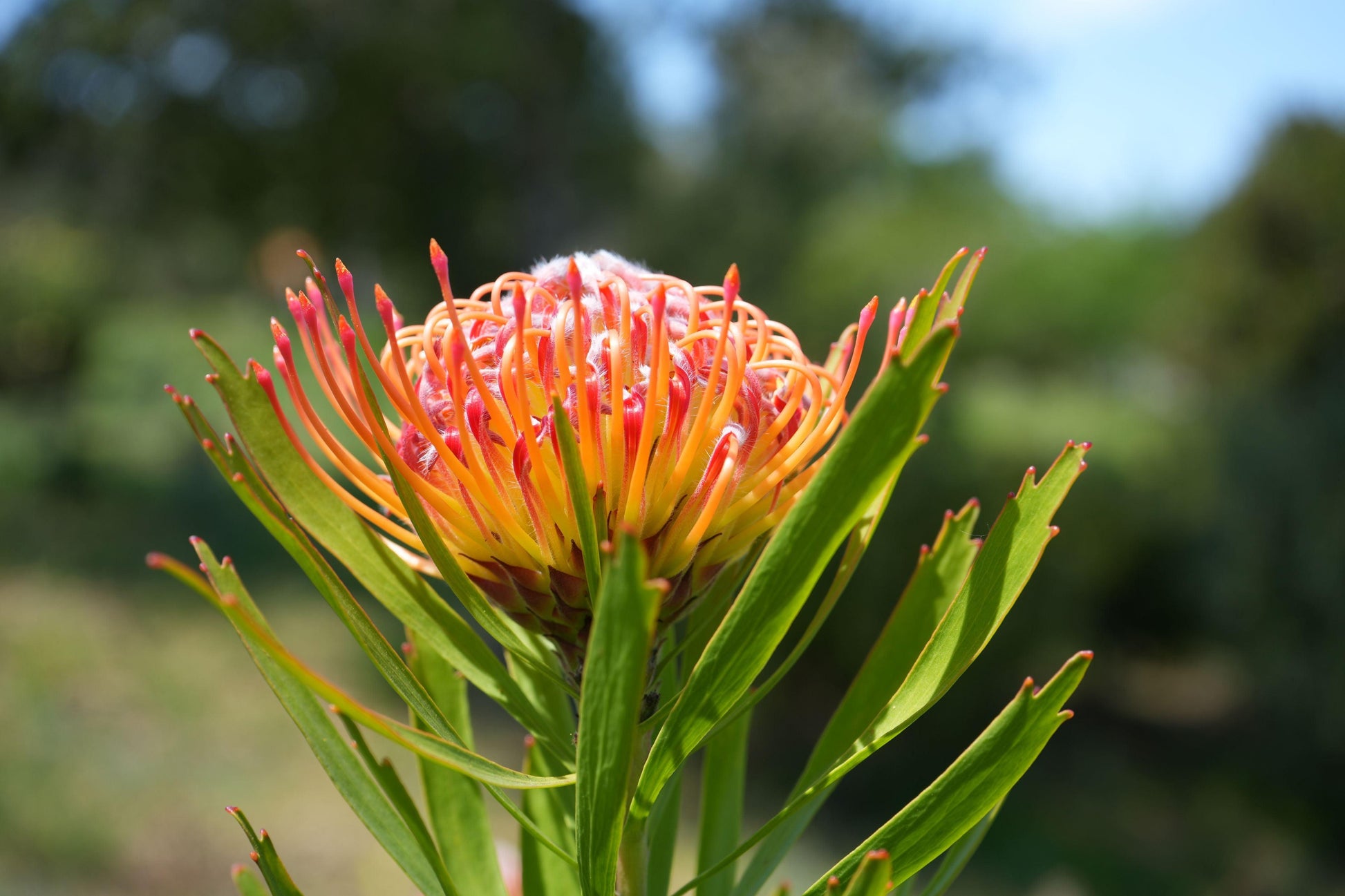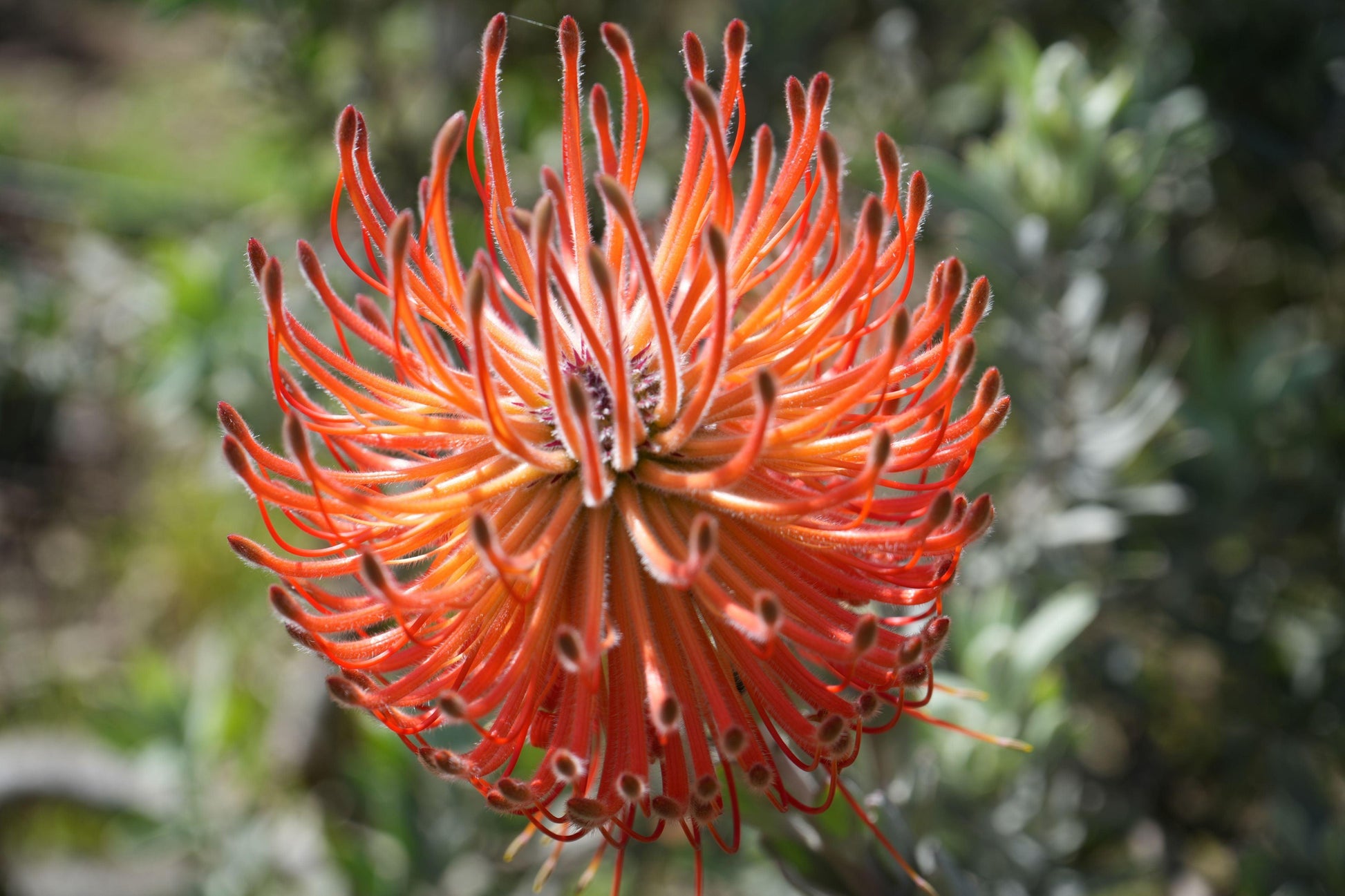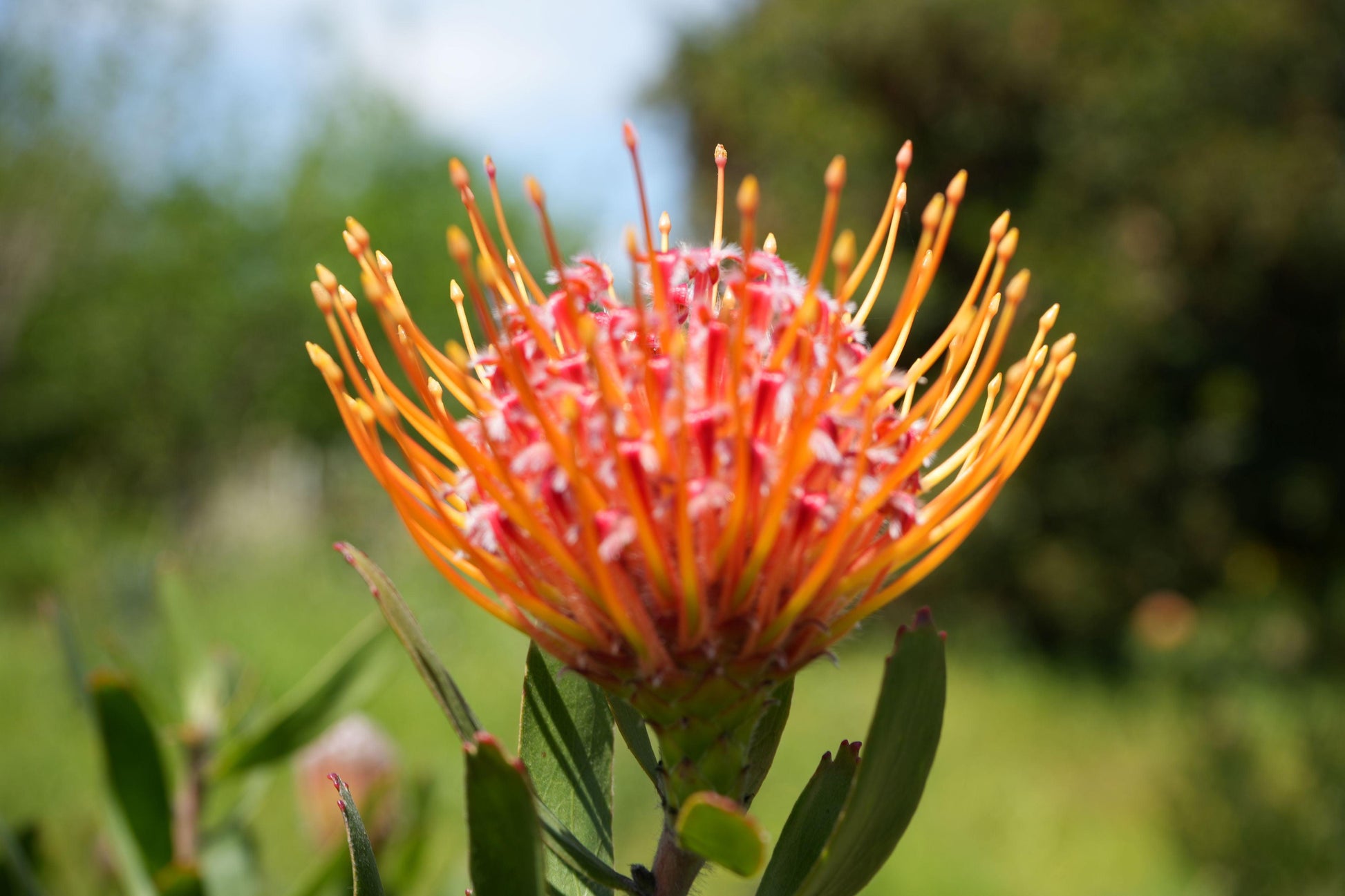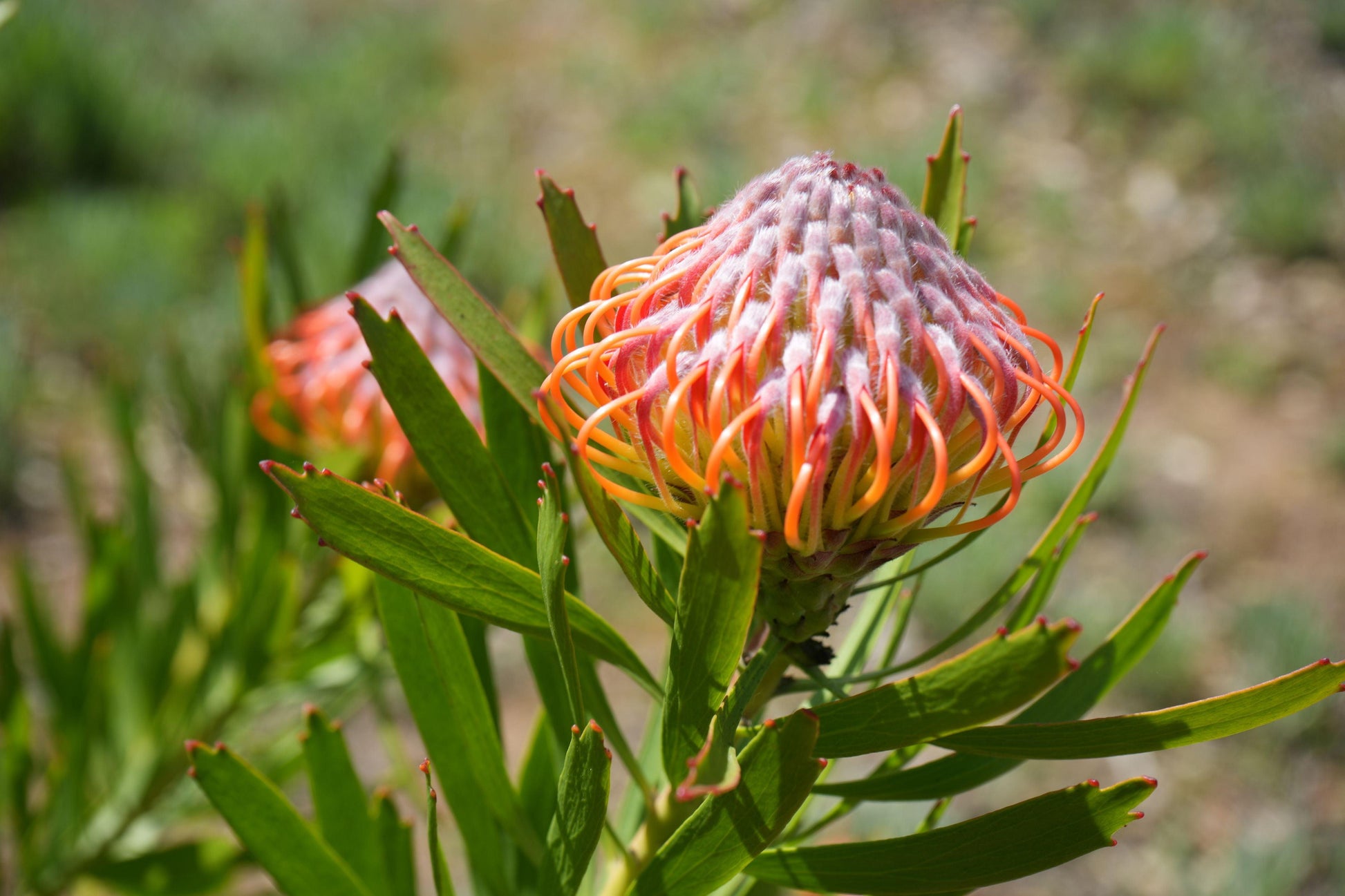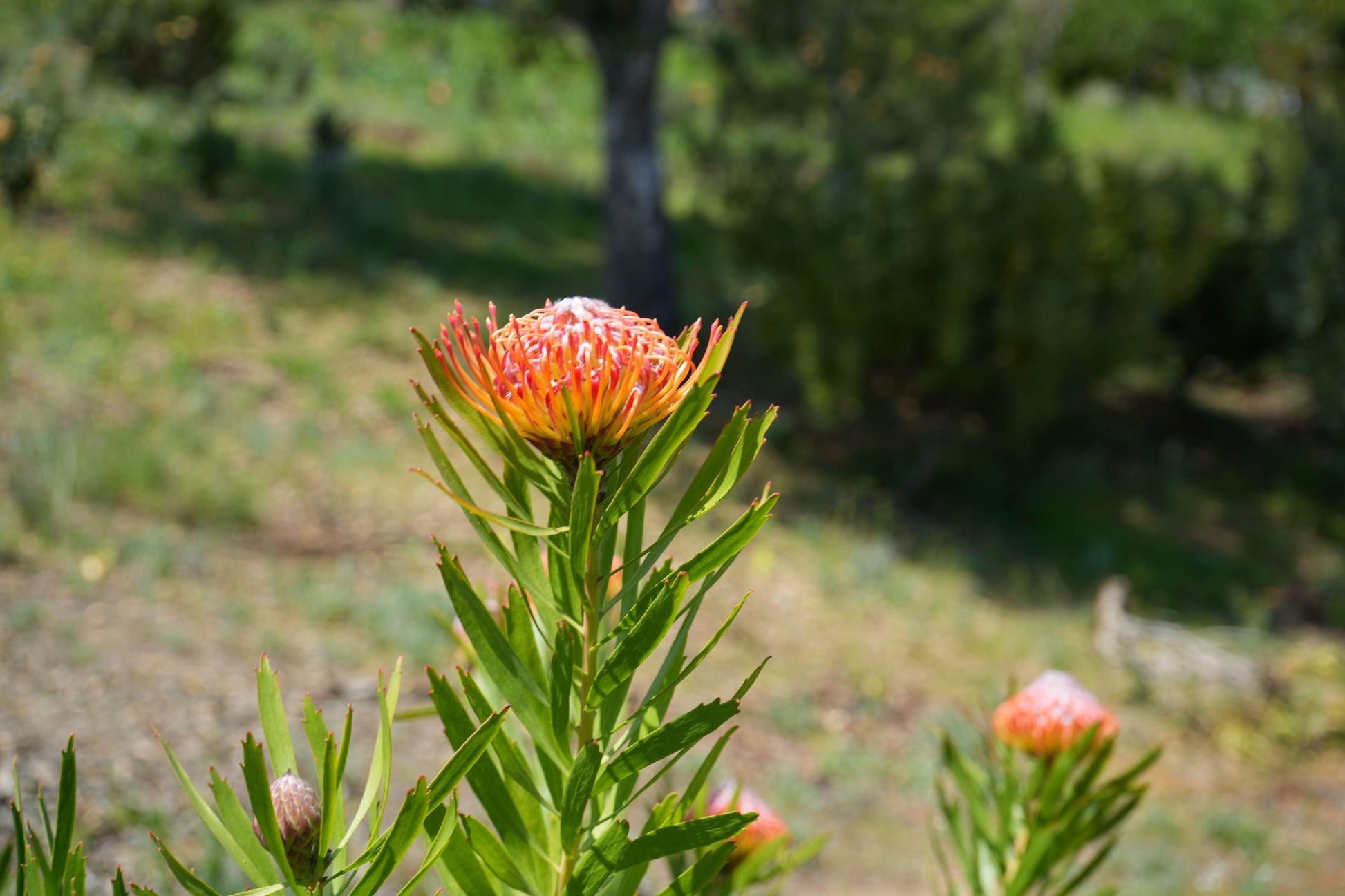Bonte Farm
Leucospermum ‘Royal Pride’: Unleash a Scarlet Spectacle in Your Garden.
Leucospermum ‘Royal Pride’: Unleash a Scarlet Spectacle in Your Garden.
Couldn't load pickup availability
👑 Leucospermum 'Royal Pride': The Massive, Crimson-Red Pincushion
The Leucospermum 'Royal Pride' is a high-performance and spectacular Pincushion Protea hybrid (Leucospermum genus) renowned for its vigorous growth and production of massive, richly colored flowers. This striking evergreen shrub is a landscape monarch, producing abundant, extra-large, globe-shaped blooms with pin-like styles in a deeply saturated, velvety crimson-red color. 'Royal Pride' is an excellent, large specimen plant ideal for creating dramatic height, intense color, and a lush, exotic feel in Mediterranean, coastal, and architectural gardens. Its robust, rounded stature, superior drought tolerance, and exceptionally large blooms make it a resilient and highly prized choice, yielding superb, strong-stemmed, long-lasting cut flowers and acting as a powerful magnet for nectar-feeding birds.
Botanical Characteristics
|
Characteristic |
Detail |
|
Scientific Name |
Leucospermum 'Royal Pride' (Hybrid Cultivar) |
|
Common Names |
Royal Pride Pincushion, Large Red Pincushion. |
|
Growth Habit |
A vigorous, broad evergreen shrub with a dense, rounded, and naturally bold habit, ideal for large landscape beds. |
|
Foliage |
Features leathery, gray-green leaves with toothed tips, densely clothing the stems. |
|
Flowers |
Extra-large, round, distinctive Pincushion flower heads, typically 5–6 inches in diameter. Color is a deep, luxurious crimson-red to ruby-red. |
|
Flowering Season |
Known for its reliable and heavy bloom period, typically flowering heavily from late winter through spring, providing essential cool-season drama. |
|
Cut Flower Use |
Premium professional-grade cut flower, highly valued for its massive flower size, strong stems, and rich, deep color. |
Mature Size
'Royal Pride' is a substantial Pincushion that commands attention in the landscape.
- Height: Typically reaches 5–7 feet (1.5–2.1 meters) tall.
- Spread: Achieves a dense, significant spread of 6–8 feet (1.8–2.4 meters) wide.
- Its large size is excellent for background planting or as a main focal point.
USDA Hardiness Zone
This Leucospermum hybrid is best suited for USDA Hardiness Zones 9–11. It requires a mild, nearly frost-free climate and thrives in full sun, performing exceptionally well in sunny, dry-summer regions. It is intolerant of sustained freezing temperatures.
Cultivation and Care
|
Aspect |
Care Instructions |
|
Sunlight |
Requires full sun (a minimum of 6 hours of direct sun daily) and excellent air circulation to ensure strong stems and maximum bloom production. |
|
Soil |
Essential: Demands perfectly well-drained, acidic soil (pH 5.0–6.0). Thrives in sandy, gritty, low-nutrient soils and must not sit in heavy, wet clay. |
|
Water |
Highly drought-tolerant once established. Water deeply during the first year. Mature plants require minimal summer water; overwatering is the primary threat. |
|
Fertilizer |
Crucial: ABSOLUTELY AVOID all phosphorus fertilizers. Proteaceae are extremely phosphorus-sensitive. Use a specialized, low-phosphorus formula or skip fertilizing entirely. |
|
Pruning |
Mandatory: The best pruning is achieved by harvesting the flowers heavily deep into the leafy growth. This encourages new growth from the base and maintains a dense, productive shape. |
Landscape Use
- Specimen Plant: Used as a highly colorful, central focal point due to its massive size and dramatic color.
- Informal Hedge: Its density and size are suitable for creating a vibrant, flowering screen or hedge.
- Cut Flower Garden: Grown specifically for its professional-grade, large, long-lasting floral stems.
- Xeriscape Design: A cornerstone, low-water, low-fertility plant for arid landscapes.
Wildlife Attraction
The distinctive flower heads produce a generous amount of sweet nectar, making them extremely attractive to nectar-feeding birds, which serve as the primary pollinators. Planting 'Royal Pride' is an excellent way to invite hummingbirds and native birds into the cool-season garden.
Pest and Disease Resistance
Leucospermum 'Royal Pride' is generally a hardy and robust plant when its crucial drainage needs are met. The most common issues are root rot and collar rot, which are caused by poor soil drainage or overwatering—this is the single most critical factor to avoid.
Propagation
To ensure the resulting plant maintains the specific, desirable traits, massive bloom size, and deep crimson color of the 'Royal Pride' cultivar, propagation must be conducted using vegetative methods. Semi-hardwood cuttings are the preferred and most reliable technique, generally taken during the warmer months. Propagation from seed is not used for maintaining cultivar identity.
Share
